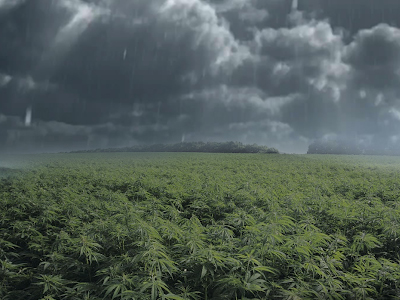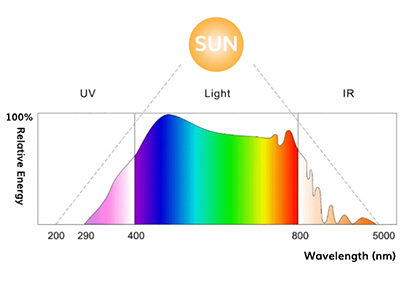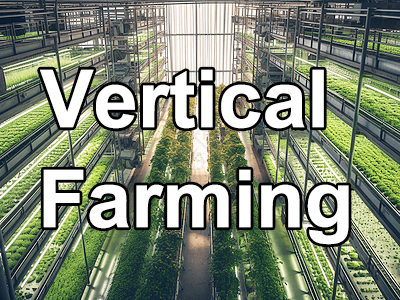Have you ever been curious about the various types of cannabis and how to tell them apart based on appearance alone? There are many types of cannabis, each with its own unique characteristics and uses. Indica, Sativa, Hybrid – these terms are more than just labels, they represent the different growth habits, effects and uses of cannabis. Next, we’ll dive into the visual differences and functional effects of these common cannabis species, and provide practical identification tips.
Cannabis Types Comparison
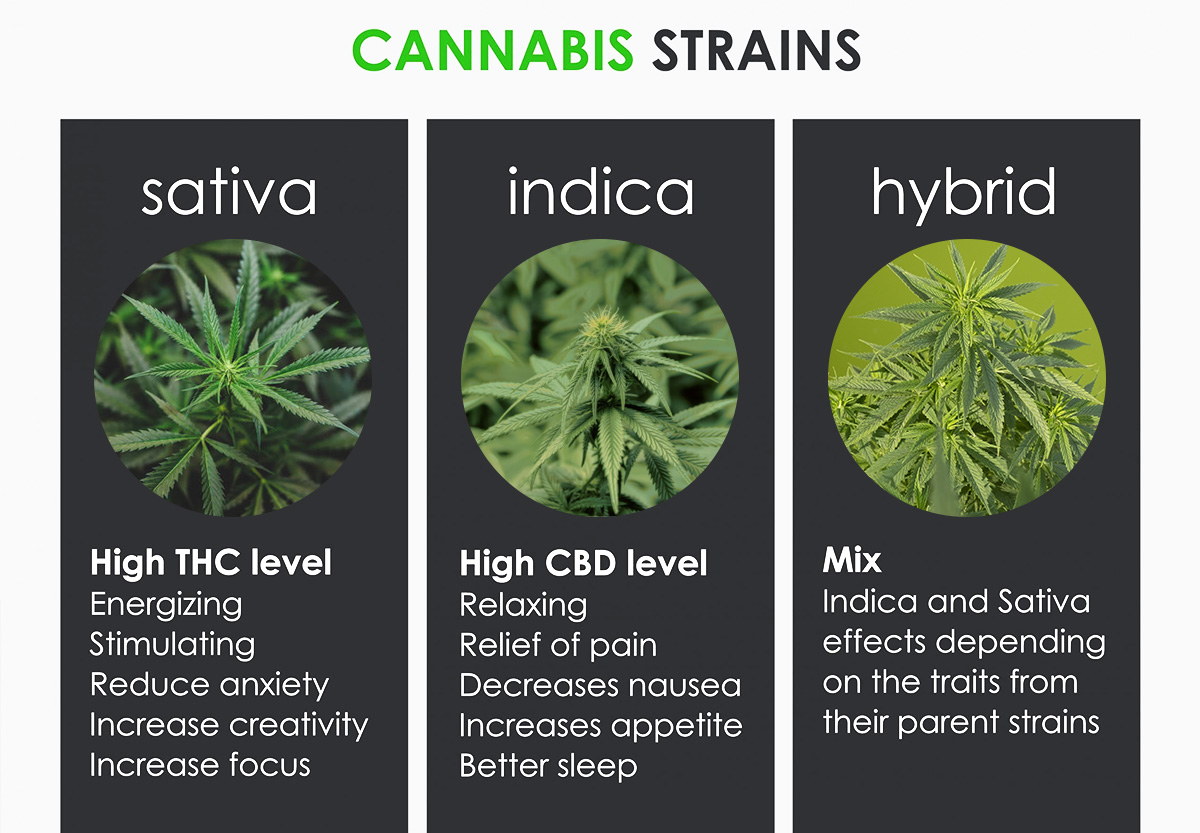
Indica :
Appearance observations: Indica species are generally short and bushy, averaging between 3 and 4 feet in height. Their leaves are broad, blunt-edged, and dark green in color. Indica flowers are usually compact and appear on short, thick branches of the plant, making the entire plant look bushier. This type of cannabis is adapted to cooler environments and has a relatively short growth cycle, which also means they can finish growing and flowering quickly before the seasons change.
Functional Effects: Indica varieties of cannabis typically contain higher proportions of cannabidiol (CBD), a compound that has been widely studied and used to treat a variety of medical conditions, such as pain, anxiety, and insomnia. This makes Indica even more popular among consumers looking for relaxing effects. Additionally, Indica's shorter growing cycle makes it a preferred choice for commercial growers in areas with cooler climates or shorter growing seasons.
Sativa:
Appearance observation: Compared with Indica, Sativa plants are taller and can grow to 12 feet or even higher. Their leaves are slender, have sharp edges, and are light green or pale green in color. Sativa has a longer growth cycle, and its flowers are sparse and distributed on longer branches, which makes the overall plant look more slender and spread out. This cannabis variety is more adapted to tropical or subtropical climates and requires more light and growing time to fully mature.
Functional effects: Compared to Indica, Sativa varieties of cannabis contain higher levels of THC (tetrahydrocannabinol), a compound that produces psychoactive effects that stimulate thinking, creativity and energy. Therefore, Sativa is often used to boost mood and increase energy, especially for those who need a mental boost or social interaction. Sativa's long growth cycle and high light requirements make it more suitable for cultivation in a warm and well-lit environment.
Hybrid:
Appearance observation: Hybrids are produced through artificial selection and mating of different Indica and Sativa varieties. The appearance characteristics are between the two and have greater variability. Their height, leaf shape and flower characteristics depend on the proportion of Indica and Sativa in their genetic background. This diversity allows hybrids to adapt to a variety of growing conditions while combining the advantages of the male parents, such as the rapid growth characteristics of Indica and the high yields of Sativa.
Functional effects: The emergence of hybrids breaks the traditional boundaries between Indica and Sativa. They inherit the characteristics of the father and are optimized in some aspects. Hybrids can produce a variety of effects based on different breeding objectives to meet the needs of different consumers. For example, some hybrids may combine the relaxing effects of Indica with the psychoactive characteristics of Sativa to provide a balanced experience. The chemical composition of hybrids is more diverse, which opens up wider possibilities for research into the medical uses of cannabis.
Identification skills
Let’s briefly sort out the key points of identifying cannabis types to ensure that you don’t get lost in this green maze. Here are some practical tips and tricks to help you improve your ability to identify cannabis species.
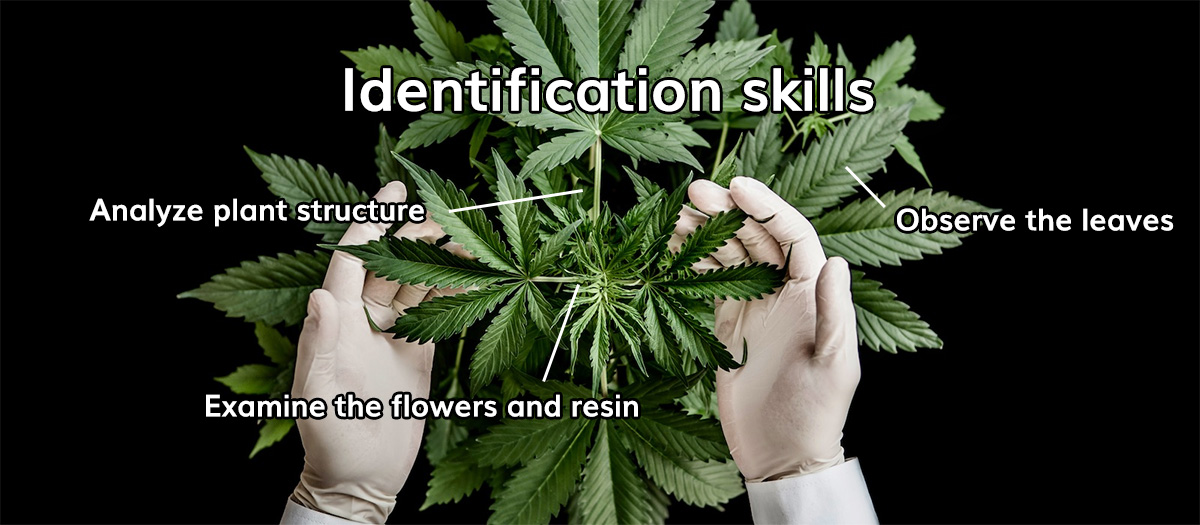
Observe the leaves: Cannabis leaves are the key to identifying the species. The leaves of Indica are broad and thick and dark green in color; the leaves of Sativa are slender and light green in color; the characteristics of the leaves of Hybrid are somewhere in between.
Analyze the plant structure: Indica varieties are usually short and stocky with dense growth; Sativa varieties are taller and thinner with open growth; Hybrid varieties may show these two extreme structural characteristics.
Check flowers and resin: Flowers are the most important part of cannabis, and different types of cannabis vary in flower size, density, and resin content. Indica flowers are generally more compact and resinous; Sativa flowers are looser and less resinous; Hybrid flowers and resin characteristics are variable depending on their genetic background.
Mastering the knowledge of cannabis species identification is not only an inspiration for plant enthusiasts, but also an essential skill for professional growers. By recognizing and understanding the different visual characteristics, growth habits, and potential effects of cannabis, we can more accurately select and apply this versatile plant. If you want to explore further or need professional advice, don’t hesitate to contact us today.





















